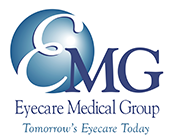
July is UV Safety Month. The American Academy of Ophthalmology is the world’s largest association of eye doctors and surgeons.
This month and every month, the AAO wants you to do all you can to preserve your eyesight. July is a great time to take these six steps to protect your eyes from the sun’s harmful rays.
Keep reading to learn what you can do for happy, healthy eyes this UV Safety Month!
Avoid Being Outside During Peak Sun Hours
The sun’s rays are strongest between ten in the morning and two in the afternoon. Being outside during those hours puts you at greater risk for short-term and long-term damage to your eyesight.
You’re at the highest risk of developing photokeratitis, which is essentially a sunburn on your eyes during peak sun hours. Photokeratitis causes damage to the cornea caused by overexposure to UV rays.
While this usually heals on its own, like sunburn on the skin, it’s painful and best to avoid if possible.
Wear Sunglasses When Outdoors
Every time you head out the door, take your sunglasses with you and ensure that you wear them. Even on cloudy days, UV rays can cause damage to your eyesight.
Sunglasses are a critical first line of defense in protecting your eyesight, and they also look good. When choosing sunglasses, make sure they offer one hundred percent UV protection.
Look for a label or tag that indicates a UV four hundred rating or one hundred percent UV protection. In addition to reducing your short-term risk of photokeratitis, UV protection from sunglasses can also reduce your long-term risk of developing cataracts or macular degeneration.
Both of these are serious eye conditions that can reduce your eyesight and lead to blindness.
Choose a Brimmed Hat
Shading your eyes with a hat brim offers additional protection, and you can’t overdo it when it comes to preserving your sight. Choose a hat with at least a three-inch brim, and ensure it’s tightly woven with no holes to let the sun in.
It’s estimated that hats can block as much as half of all UV rays from your eyes and eyelids.
Drink Enough Water
While drinking water helps your whole-body health, replenishing the moisture you lose on an average day is essential. Like other parts of your body, your eyes need moisture.
Drinking water can reduce your risk of developing dry eye syndrome and other eye problems that can cause discomfort.
Remember to Blink
Isn’t blinking automatic? Most of the time, it is, but your blinking rate tends to slow down significantly when you’re on a computer.
Adults blink on average ten to twenty times a minute, with fifteen to sixteen blinks being the most common rate. Blinking lubricates the eyeball and replenishes your tear film.
Your tear film contains a combination of water, oil, and mucus. The tear film keeps the surface of the eye smooth and feeling comfortable.
To keep your eyes healthy, set a timer every ten to fifteen minutes. At this point, take a break from what you’re doing and deliberately blink several times to replenish the moisture in your eye.
Check Your Medications
Prescription drugs and even over-the-counter medications can make your eyes more light-sensitive. Light sensitivity can cause inflammation, burning, and excessive tearing.
Going outside, even briefly on cloudy days, can be difficult and painful when your eyes are light-sensitive. Medications to watch out for include antibiotics, retinoids, and nonsteroidal anti-inflammatory drugs like ibuprofen.
The reward for taking all these steps is excellent eyesight free of disease and damage. So grab your sunglasses, hat, and water bottle, and enjoy the summer safely.
Do you want to learn more ways to ensure eye health? Schedule an appointment at Eyecare Medical Group in Portland, ME, today!





